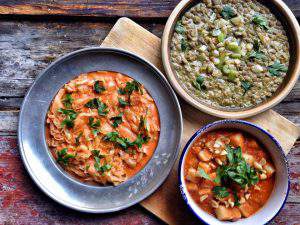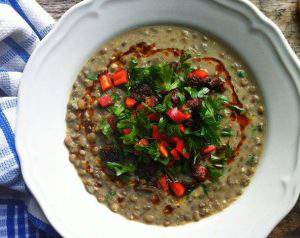Recipe of the week: The Hungarian főzelék

The főzelék is a traditional Hungarian vegetable-based meal, which plays a vital role in our cuisine as it complements meat dishes perfectly and has a good effect on metabolism. For many people, főzelék symbolizes childhood, because it is a common method parents and grandparents use to endear vegetables to kids. Well, it is definitely a delicious way to do so 😉
The most exciting thing about our főzelék is that it cannot be translated to any other languages. We mainly explain it as “thick soup” which is probably an adequate analogy.
What makes this meal truly Hungarian is that other nations do not have any dish comparable to főzelék, at least to its thick form and the way we make it.
According to gasztro.ucoz.hu, our ancestors already cooked this vegetable-based, thick, almost juiceless dish in the 16th century. However, it remains a mystery how people thickened it back then because the conventional way of thickening dishes only spread in the 19th century. Still, from that moment on, it was a frequent meal in Hungarian families – served with meat on festive days and without meat on weekdays.

It is probably the most significant and most diverse group of meals in the Hungarian cuisine because it can be made from any vegetable, even by combining them. According to gasztroabc.hu, the flavour of the fresh vegetables is further enhanced by the different thickening methods and the spices, of course.
Any főzelék can become a fine dining specialty by adding a piece of bacon or lard skin, rosemary, bay leaves, a few drops of lemon etc 😉

Hungarian főzelék meals are frequently thickened with flour, either in the form of traditional thickening (rántás made with fat or habarás made with milk or sour cream) or simply by sprinkling some flour into the dish. According to divany.hu, the most traditional method is the rántás, which is not as common anymore as it used to be because it can be substituted with alternative methods. Opinions differ regarding the healthiest option: nowadays it is believed that it is better to use habarás, starch or thicken the főzelék with the vegetable itself.
The főzelék options are endless, but we decided to detail two popular versions below (taken from Nosalty). Since the recipes are quite similar, you can easily substitute our vegetable choices for whatever you feel like eating. Moreover, you can read about our traditional New Year’s lentil főzelék here.
If you have not had főzelék before, you should definitely try it, because it is not only easy to make but also quite filling 🙂
Pea főzelék
- 1200 grams of peas
- 3 tablespoons of butter
- 1 onion (the original recipe does not call for it, but as we know, onions are staple ingredients in the Hungarian cuisine, and they make everything taste better)
- 3 tablespoons of flour
- 2 dl of milk or sour cream
- parsley
- salt, pepper

If you are working with fresh peas, you first peel them (great communal activity). If you are working with frozen peas, take them out of the freezer for some time. Melt the butter and add the chopped onion. Let it cook a bit and add the peas. Let them steam together for a few minutes. Add the salt, pepper, parsley, and water to cover the mixture. Cook for 20 minutes. Prepare your thickening in a bowl: mix the milk/sour cream with the flour and some of the juice of the főzelék. Slowly add your thickening to the saucepan and cook for 10 more minutes. Serve with fried eggs or some stew.
Enjoy!
Potato főzelék
- 2 tablespoons of oil
- 1 teaspoon of paprika
- 700 grams of potato
- 2 tablespoons of marjoram
- 3 bay leaves
- 2 dl of sour cream
- 15 grams of flour
- salt, pepper
Chop up the potatoes into small cubes. Heat up the oil, carefully add the paprika and the potatoes. Mix and heat them for a minute, then add as much water as is needed to cover the potatoes. Add the salt, pepper, marjoram and bay leaves, and let the mixture cook for 20-25 minutes or until the potatoes soften. Meanwhile, prepare your thickening: mix the sour cream with the flour and a ladleful of cooking juice. Then stir it into the főzelék and let it cook for 5 more minutes. Serve it with meatballs.
Enjoy!
Featured image: www.nosalty.hu
Source: Daily News Hungary





